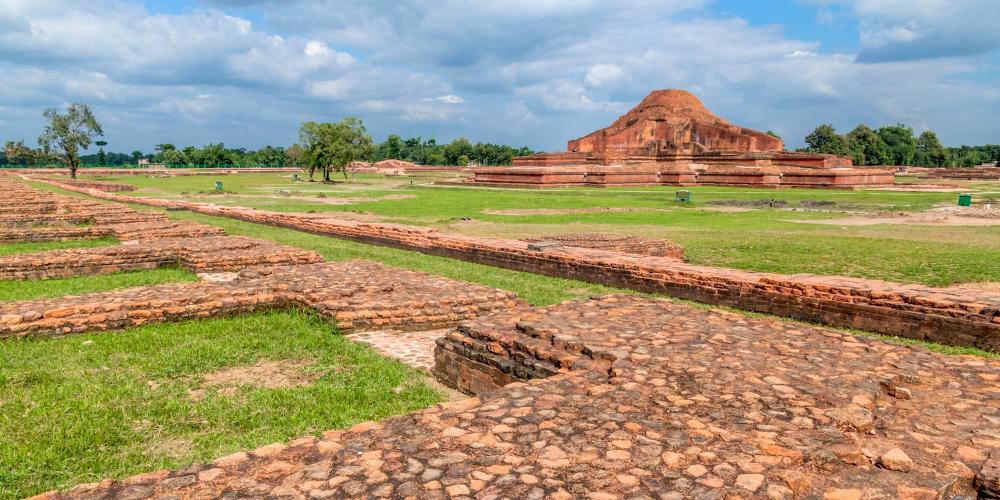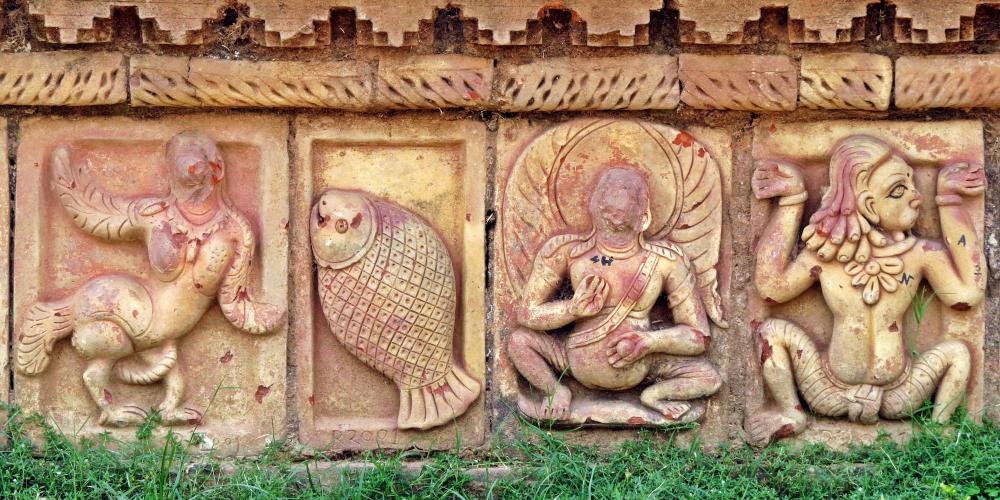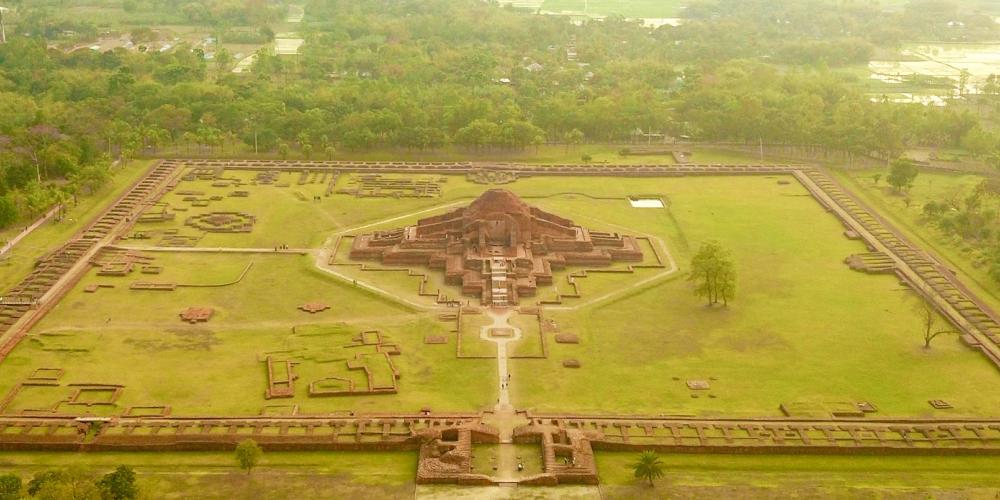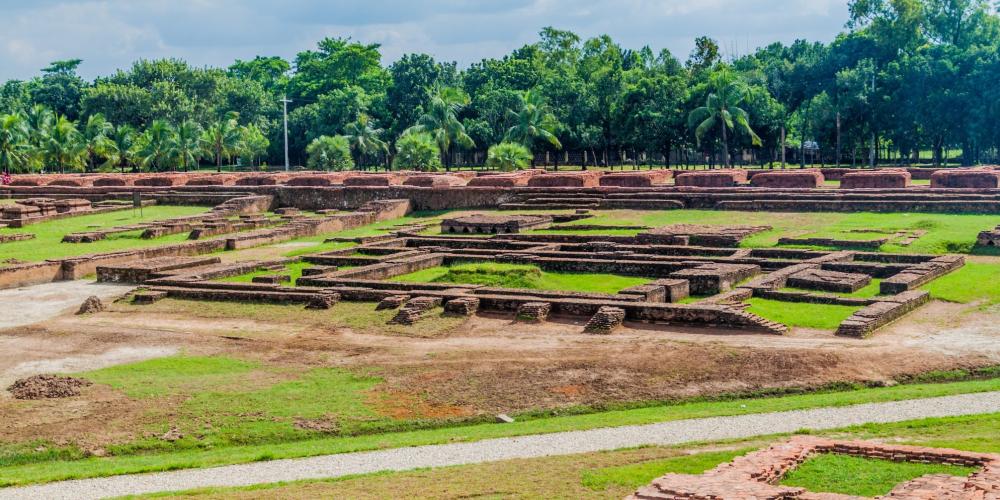Ruins of the Buddhist Vihara at Paharpur

During the lifetime of Buddha, it was relatively simple for followers of his teachings to find answer to their questions. They would just ask him.
Even in the centuries after Buddha's death, there was only a small number of people who were listened to as thought-leaders in the religion. The great Indian emperor Ashoka, for instance, took on a guiding role of shaping the messages of Buddhism as he spread it across the region.
But as Buddhism expanded across Asia in the subsequent centuries, it also fractured quite dramatically. There were different ways of interpreting the Buddhist texts – and there were also new texts being written. Followers in different countries adapted the faith to their own circumstances. Even within the same region, the methods for practicing the faith evolved in a variety of ways.
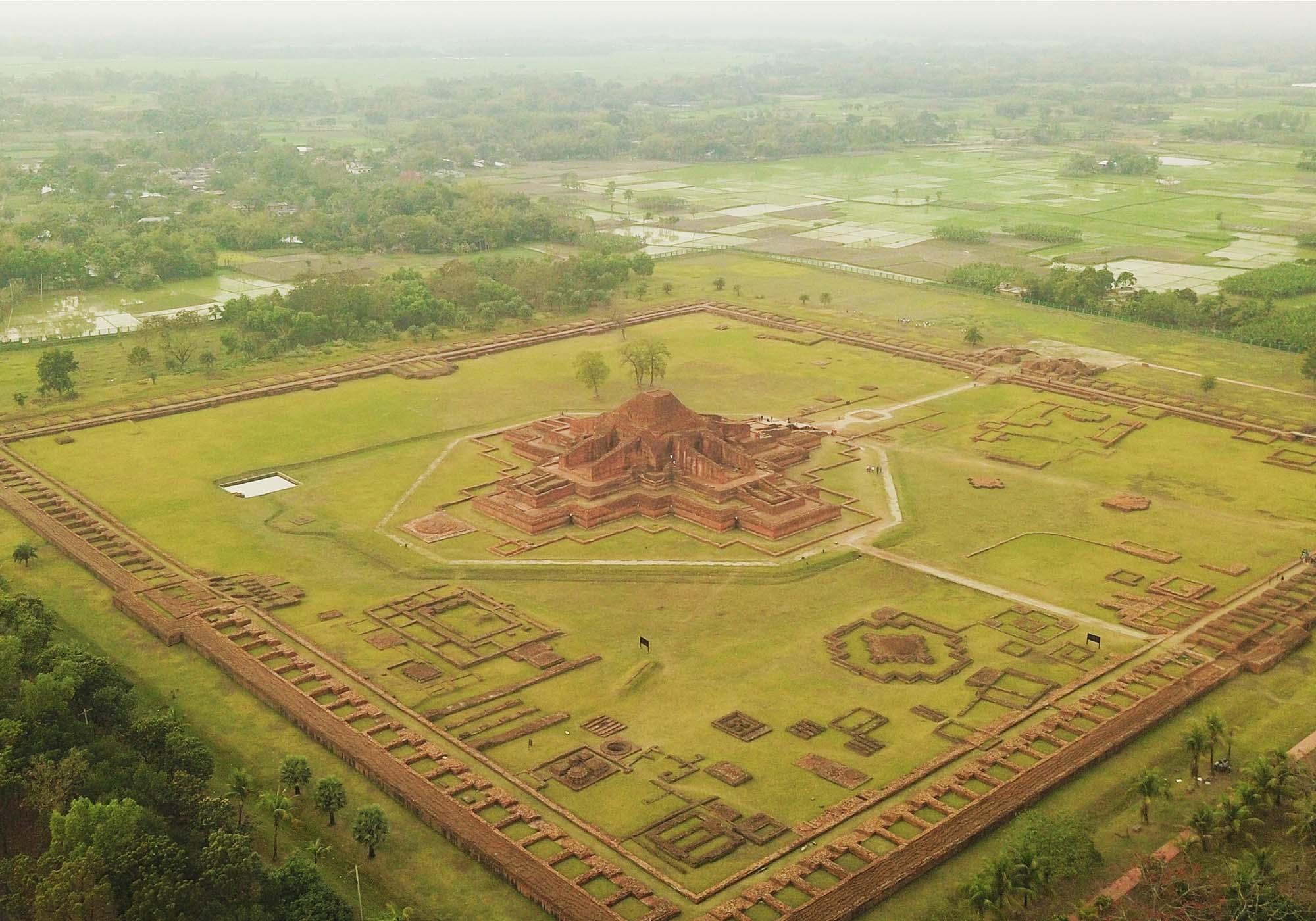
It was against this backdrop that the great monastery of Paharpur was established in the 8th century in modern-day Bangladesh. Here, the brightest minds of the era gathered to try to answer the questions that arose from this fractured Buddhist landscape. Paharpur served as one of the most important intellectual centres in the world until the 12th century, and the philosophies that emerged were a synthesis of generations of different ideas.
With such a concentration of scholars, Paharpur played a vital role in the rise of a new branch of Buddhism called Vajrayana, that would spread through Asia and is still the dominant form practiced in Tibet. In particular, the philosophies being discussed at Paharpur were easily taken to Southeast Asia along a new maritime trade route. You can still see the influences in some of the region's monuments, such as Borobudur (Indonesia), Bagan (Myanmar), and Angkor Wat (Cambodia), that are all based on Paharpur's main temple.
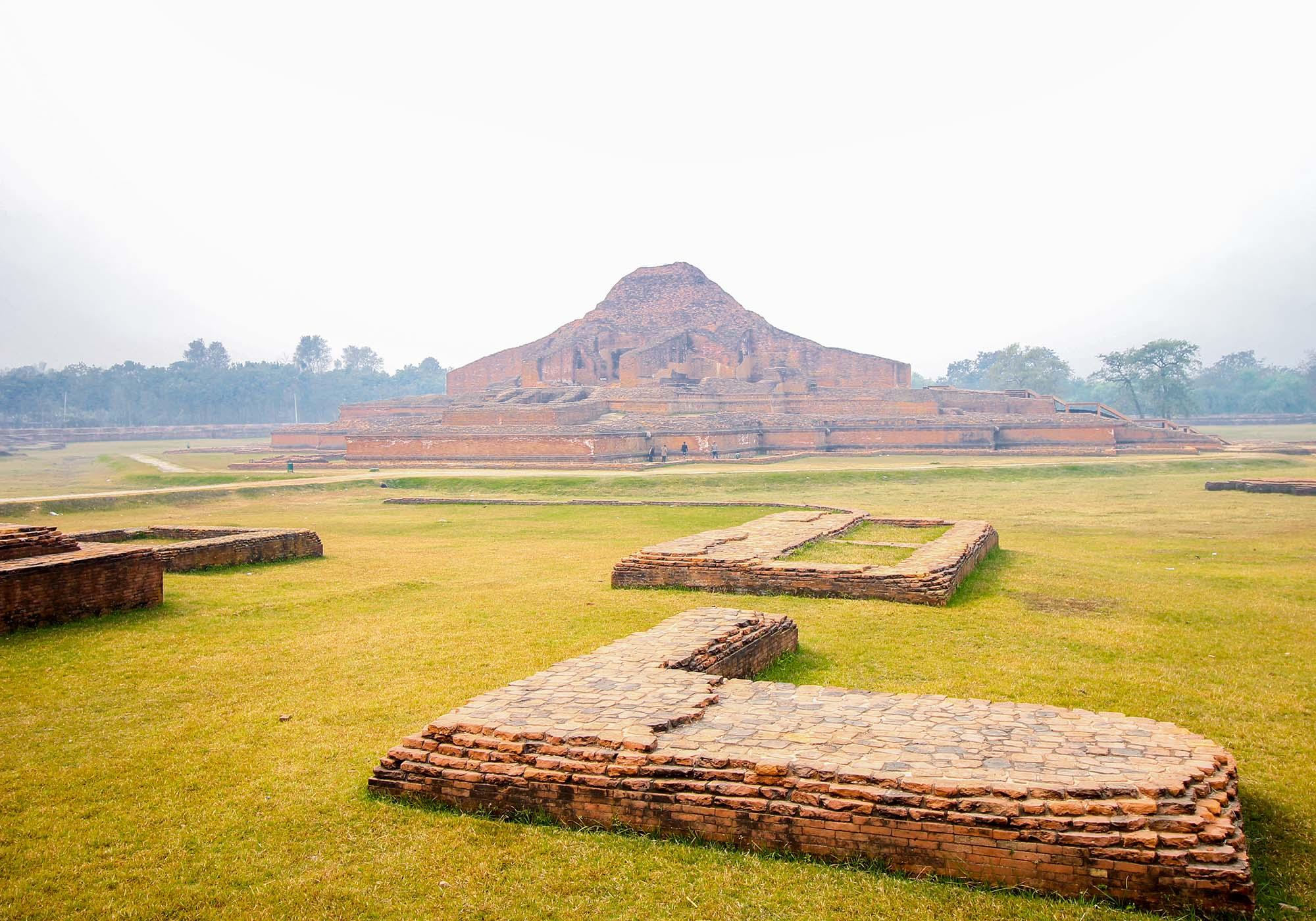
The main temple of Paharpur rises up from the centre of the site as a physical manifestation of the new Buddhist ideas developed here. It was the first time a cross shape was used for the design of a Buddhist temple and it's still an impressive sight for visitors. Around the edges of the central quadrangle are the four long walls that make up the monastery, each with dozens of rooms that monks would have lived in. With simple harmonious lines and a profusion of carved terracotta plaque decoration, the monastery represents one of the greatest artistic achievements of its time.
The vast monastery at Paharpur was only possible because of the support of the wealthy Pala Dynasty that for 400 years ruled Bengal, the historic region that is now mainly Bangladesh and the Indian state of West Bengal. It was built at the end of the 8th century under King Dharma Pala Deva, the most important of the Pala kings. It was his sponsorship of Buddhism in Bengal that began a revival of the faith in the region.
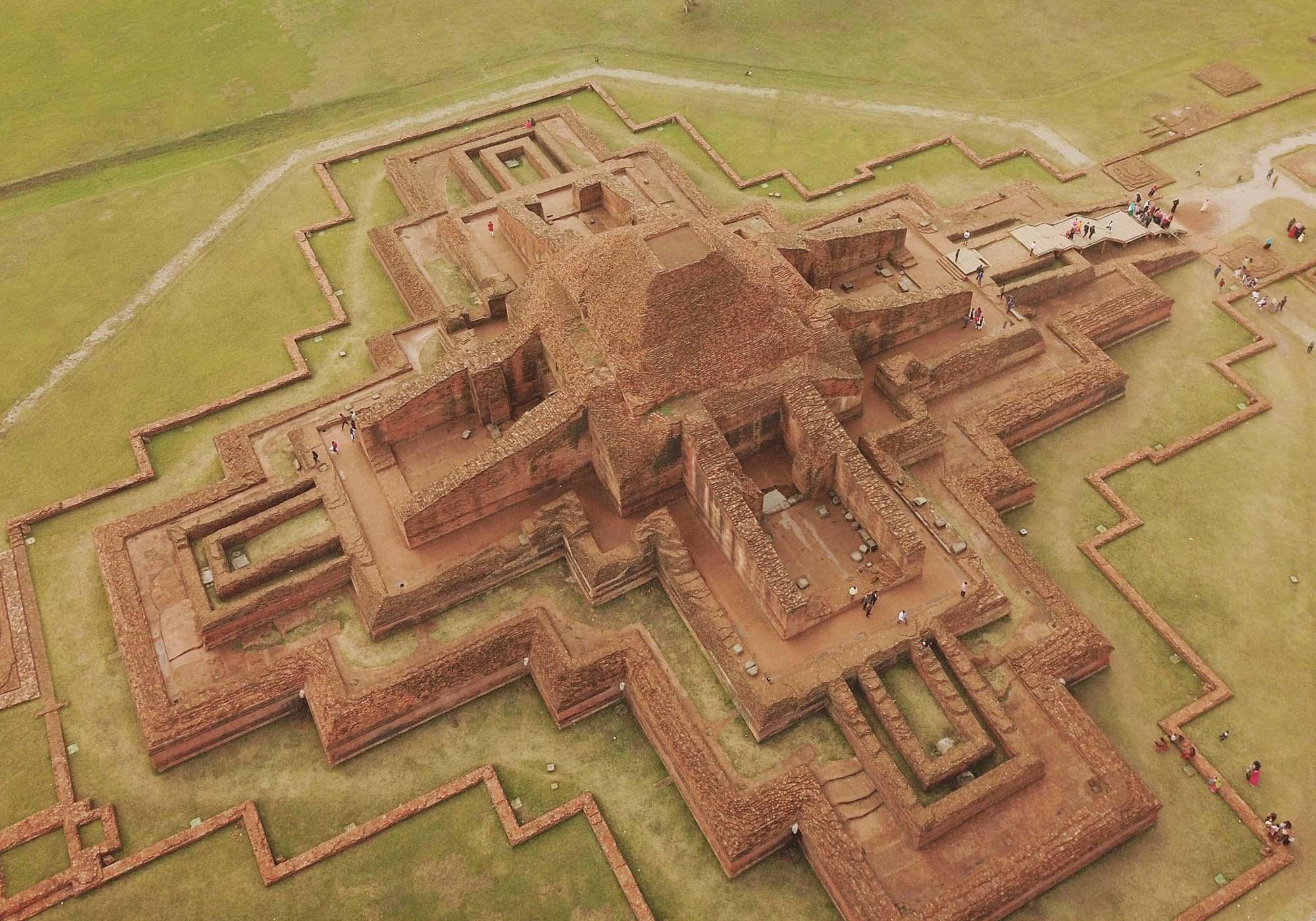
At the time, the monastery was known as Somapura Mahavihara. It was connected academically with other major monasteries that thrived with the support of the Pala Dynasty, including Vikramashila and Nalanda (another World Heritage Site) in the Bihar of India. Scholars were able to move between the institutions, amplifying the intellectual pursuits of the monks.
An intellectual life
In the long walls that make up the central quadrangle at Paharpur are the rooms where the monks would have lived. There are 177 of them and historians assume that there would be multiple people in each one.
Life in the monastery was very formal and structured. The monks would wake up at sunrise and walk around the main temple two or three times on all three tiers, before beginning their academic day by studying the scriptures. After lunch, they would usually spend the afternoon in meditation. At sunset, the monks would walk around the temple again.
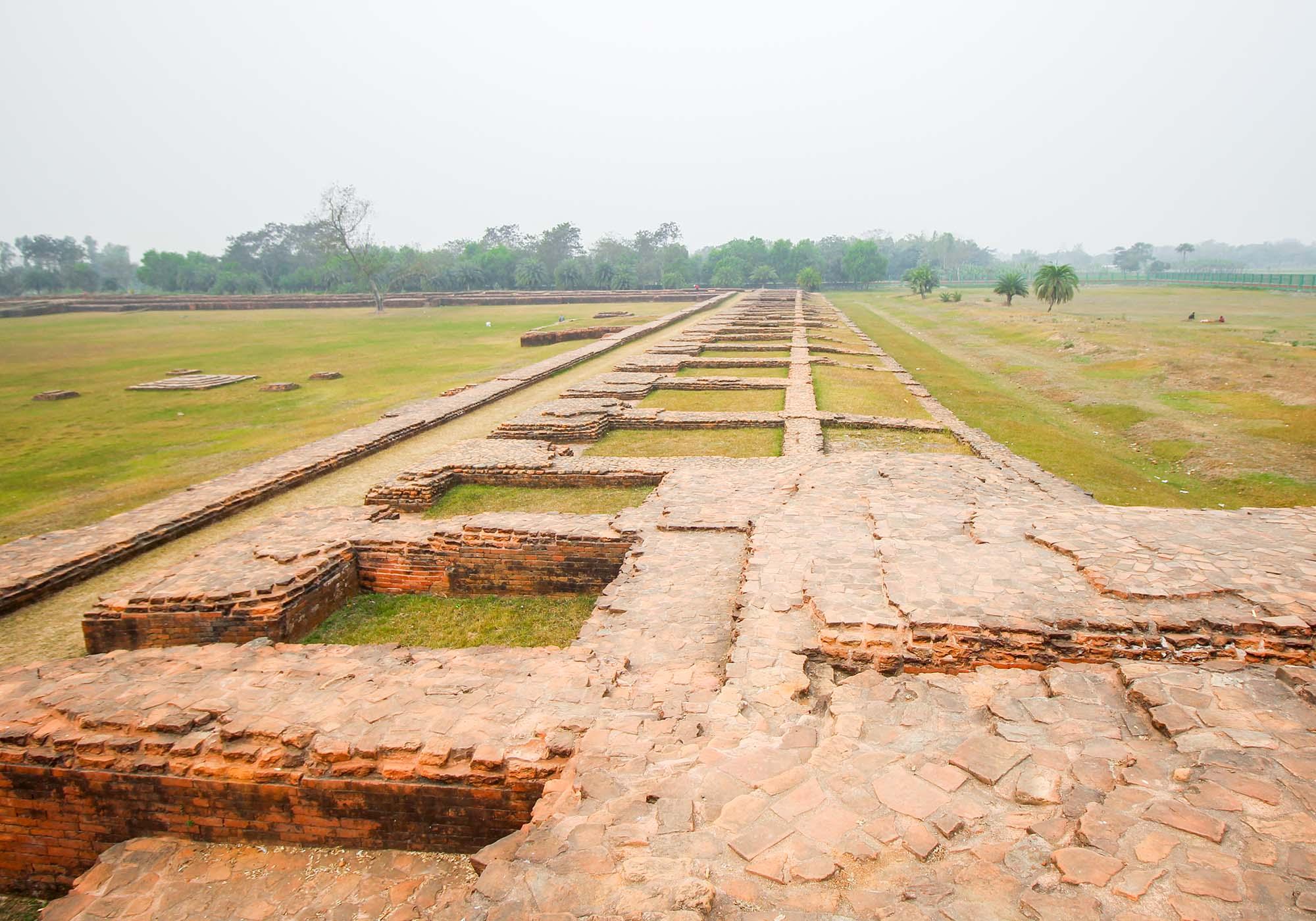
Even though Paharpur was a centre of learning, it did not have classrooms in the way we might think of them today. Instead, there was an emphasis on self-learning and the monks would use the space in their rooms to read texts or think about issues.
Many of the monks and academics who would stay at the monastery were not permanent residents. Some would come for just a few days or weeks. It was a chance for them to be alone in their thoughts in a spiritual environment or seek guidance from other scholars. For this reason, the monastery was intentionally separated from local communities to prevent distractions.
The rise of Vajrayana
By the time Paharpur was established, there were two main branches of Buddhism – Mahayana and Theravada. However, a third branch was beginning to develop around Bengal. It was called Vajrayana and it was at monasteries like Paharpur that monks meditated on this new form of Buddhism and it evolved into a philosophy that was then spread through Asia.
Vajrayana is based on Mahayana principles that all beings are suffering and an individual should try to reach enlightenment to help everyone, not just themselves. However, the main difference is that Vajrayana says people can reach enlightenment much faster and begin to make a difference almost immediately. Followers of Vajrayana believe that by doing certain rituals and looking at the world in a more complex way, they can achieve in one lifetime what other Buddhists may take hundreds or thousands of lifetimes to do.
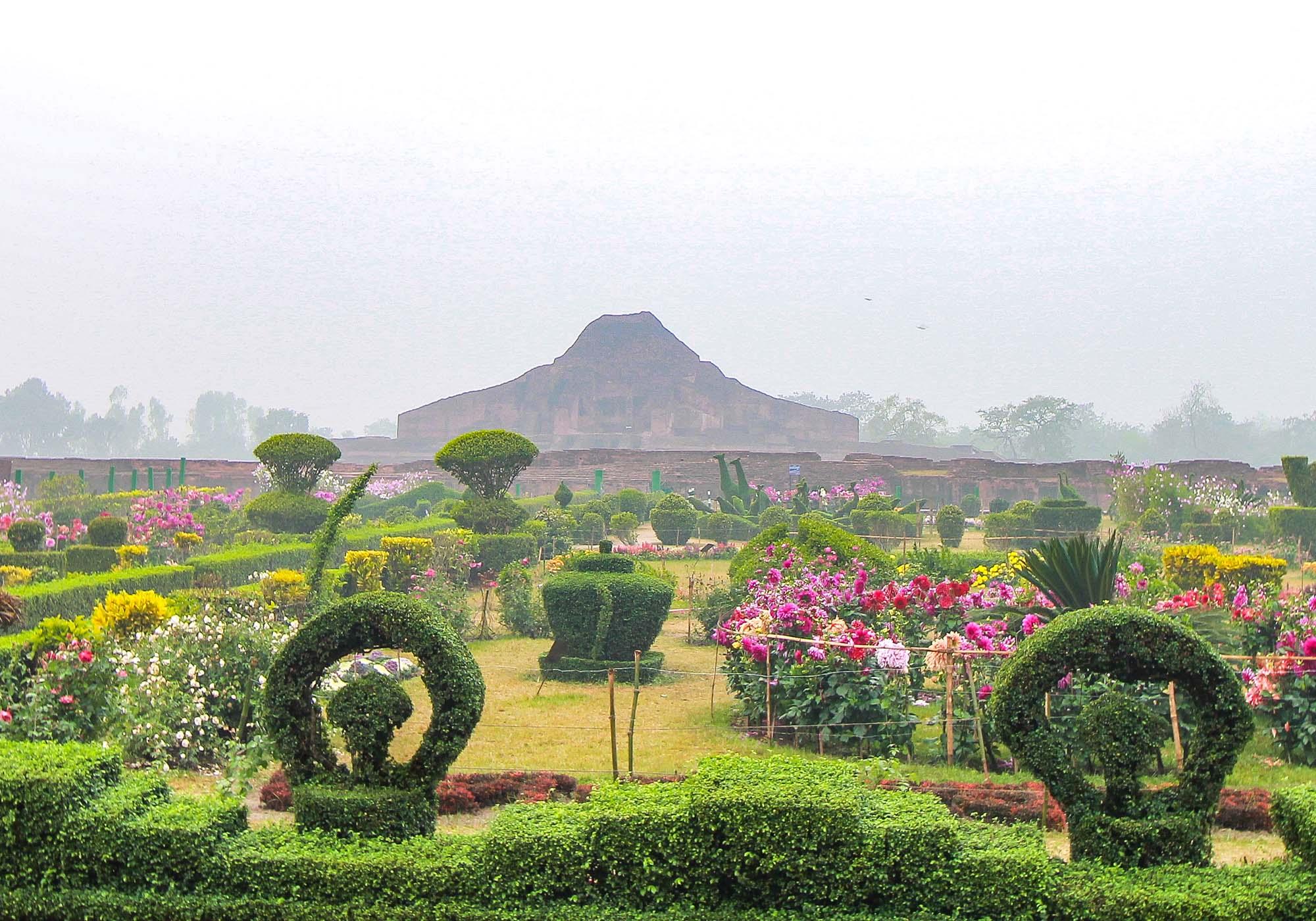
Although the philosophies of Vajrayana did reach many parts of Asia, there are not many countries where it is still practiced in large numbers. A form of it is still found in Shingon Buddhism in Japan and in Tendai Buddhism in China. However, Vajrayana is still the dominant Buddhist philosophy in Tibet, Mongolia, northern India, and parts of Nepal.
Architectural influence
Aside from the spread of Vajrayana, the biggest influence of Paharpur can be seen in the architecture of some of the greatest monuments in Southeast Asia.
The main temple of Paharpur was among the first temples with a cross-shaped main design. This cruciform is believed to be a representation of the five 'Eternal Buddhas' that are a part of some Buddhist philosophies, particularly in the Vajrayana branch. The temple is built as a series of three terraces, with the lower two and middle terrace including a path that you can use to walk around the structure. The upper level is a massive rectangular central block.

It's these design elements that were then exported to Southeast Asia along a new trade route that the Pala Dynasty had established, reaching all the way down to Java. When Buddhists in Southeast Asia went to construct their most important temples, they took their inspiration from the great learning centre of Paharpur. Today, you can see the terraced cruciform design at Borobudur in Indonesia, Angkor Wat in Cambodia, and Bagan in Myanmar.
How to Get There
From Dhaka either by road (car rental, bus) via Bogura,Mahasthangarh to Paharpur. The drive takes about 9 hours (260km). Car rental services from Dhaka ask for +/- US$ 60 per day. One-way drop offs and pick-ups from Paharpur can be arranged for US$ 60 per direction. Starting from Dhaka the following route is best taken: Dhaka – Savar – Chandra – Tangail – Jamuna Bridge (Bangbandhu Setu) – Bogura – Jaypurhat – Badalgachhi – Paharpur.
From Dhaka to Rajshahi by air (3x daily, roundtrip US$ 100). Then from Rajshasi to Paharpur by road. The drive from Rajshani airport to Paharpur takes about 4 hours (100km). Car rental services from Rajshani ask for +/- US$ 60 per day. One-way drop offs from Rajshani airport to Paharpur and vice versa can be arranged for US$ 30 per direction.
By train, several daily trains connect North Bengal with the Kamlapur Railway Station in Dhaka. The closest train station to Parharpur is Jamalganj, Naogaon, which is 5 km away from the site. Both auto rickshaws and van rickshaws are available and connect the trainstation with Paharpur Bazar and the Parharpur monastery site. Duration of the journey depends on the chosen train.
When to Visit
The best time to visit Parharpur is between October and March, when the climate is moderate with little to no rain. Daily temperatures range from 13°C to 31°C.
How to Visit
Bangladesh’s subtropical monsoon climate with wide seasonal variations in rainfall, temperatures and humidity require the visitor to bring adequate clothing, mosquito repellent, sun protection, and comfortable shoes.
The diversity and remoteness of Parharpur and its surrounding attractions and experiences justifies at least two or three days. You should plan at least one full day for the Somapura Mahavira, its museum, and surrounding heritage site Satyapir er Bhita. A visit of Mahasthangarh may be easily combined with a visit of Jagaddala Mahavihara, Bhasu Vihara, and Gokul Medh for a full day itinerary which is best done by rental car.
Various English-speaking tour operators offer multi-day tours to Paharpur and other attractions. Dhaka-based tour operators include:
- Journey Plus - info@journeyplus.com, +88-02-9842332
- PathFriend - info@pathfriend-bd.com, +88 01913394033
- Tourist Channel Bangladesh - info@touristchannelbd.com, +8801713090008
Sights and Attractions recommended by the locals
Ruins of the Buddhist Vihara at Paharpur
8am - 8pm
